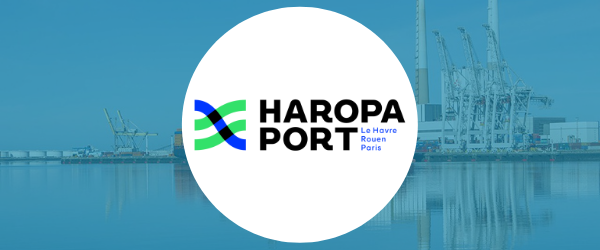Port of Le Havre
A real-time geospatial platform that makes port management smoother, safer and more connected
PortAll, a cross-functional application that allows all users to view and query the most up-to-date and accurate data, static data and real-time data (AIS, cranes, anemometers, tide gauges, etc.).

The traffic in the port of Le Havre is crowded, the port master’s office has to monitor, examine and secure the whole port surface. In the past, only maps existed; a waste of time, reflection and a risk of making mistakes. Today, Geomod has designed the PortAll application which facilitates the management of the port (hydrographers, harbour master’s office, pilots and dockworkers).
PortAll, an application used by the port of Le Havre
Developed by Geomod by Coexya, PortAll allows:
- Hydrographers (from their PC) can automatically produce bathymetric charts and make them available to other users (port master’s office, placement service, pilots)
- The port master’s office staff (from a tactile board) can place personalized and detailed boat templates according to the environment, available cranes, draft…
- Pilots (from their smartphone or tablet) have all the information they need to carry out their mission and to communicate with the captain (present the maneuver, debrief at the end of the mission based on the mission replay…)
Geomod can also ensure the production and updating of accurate harbour charts (S-57 standardized charts), adapted to the users’ expectations. The official navigation charts produced by the State hydrographic services do not always have the expected accuracy because their responsibility stops at the port entrance.
Voice-over: Seabed mapping, or bathymetry, begins aboard this patrol boat. Equipped with numerous measuring instruments, it surveys the port of Le Havre and scans every square metre below the surface.
Ronan SCHUBEL - Head of Oceanography: This boat is equipped with a multibeam echo sounder, which means that it can measure in several directions at the same time. In other words, the boat's echo sounder emits through a cone. It's as if we had 511 sounders at the same time. This means that when we send out a signal, we receive 511 depth measurements. For example, here we are sounding the access channel to the port of Le Havre until we have covered the entire access channel.
Voice-over: The data collected on board is compiled here at the Maritime Access and Environment Department and modelled in three dimensions. But the real novelty this year is this interactive table, which reproduces the terrain surveys to the nearest metre.
Cédrick DUMOULIN - Hydrographic Technician: Here in the port of Le Havre, with the Seine estuary, we are constantly having to dredge to ensure the seabed is safe for ships to enter, given that we have the largest ships with the deepest draughts. Now, within 48 hours, they have the updated plan both on the table and on the pilot tablets, because the pilots retrieve the same information.
Voice-over: Three of these tablets have been installed at the harbour master's office, including one in the lookout. Before, everything was on paper, so for those who have to manage nearly 6,000 port calls a year, it's an invaluable tool.
Alexandre GUYOT - Deputy Commander - HAROPA - Port of Le Havre: It's much faster to use and much more reliable for us too, because by zooming in and out on the screen, we can get more accurate information about the probes and any bumps, see exactly how the terrain is structured, and it also allows us to see the entire channel just by scrolling like this, rather than pulling out a dozen maps. We can create ships, and the ship appears on my screen in the dimensions I enter, and I can position it on a quay, look at the mooring, see if we can moor it correctly. It's very quick to see immediately if there's a problem.
Voice-over: The harbour master's office plans to integrate real-time ship management and Predit tide data into the Swing table. This would enable staff to react almost immediately, thereby reducing the risks associated with ship safety.


